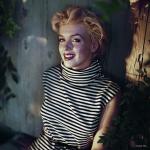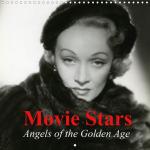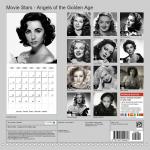
Lundi 7 octobre 2019 - 23h55 - Arte
A revoir en replay sur arte.tv
Silence Sounds Good
Réalisation: Adriana Lopez Sanfeliu
Pays: France
Année: 2019
Durée: 62 min
Ancien directeur de l'agence Magnum, devenu célèbre pour ses portraits de onze présidents des États-Unis, ou de stars du cinéma, l'Américain Elliott Erwitt, né à Paris en 1928, s'est aussi distingué par des choix plus politiques ou humanistes, non sans un certain humour. Portrait sensible d'un des plus grands photographes du siècle passé, au regard toujours aiguisé.
Il a beau figurer parmi les photographes incontournables du XXe siècle, avec certains de ses clichés devenus iconiques, Elliott Erwitt, à 91 ans, demeure toujours insatiable. Le travail reste sa motivation quotidienne et composer un plan ou orchestrer la sortie de son prochain livre l'occupe presque dix heures par jour. C'est cette passion incandescente pour la "prochaine image" à saisir, cet esprit toujours en marche que ce film, réalisé par son assistante Adriana Lopez Sanfeliu, se propose d'accompagner, non sans une tendresse manifeste.
Ironie libre
Ancien directeur de l'agence Magnum, devenu célèbre pour ses portraits de onze présidents des États-Unis, ou de stars du cinéma, cet Américain, né à Paris en 1928, s'est aussi distingué par des choix plus politiques (la ségrégation raciale, le Che) ou humanistes (les enfants, les chiens et leurs maîtres), non sans un certain humour. "Je mets beaucoup de sérieux à ne pas être sérieux", a-t-il avoué lors d'une rare interview accordée à un journaliste de la télévision. Une ironie douce, souvent adressée à lui-même, que parvient à capter Adriana Lopez Sanfeliu en suivant le quotidien de son mentor. Portrait sensible, libre, son film rare – Elliott Erwitt n’aime pas être regardé – fait de la lenteur de son vieux personnage un motif récurrent, et aussi un motif d'étonnement, tant la force qu'il dégage derrière son appareil impressionne. "Le succès, c'est la liberté de pouvoir faire ce qu'on veut à tout moment."
© copyright text : Arte.

/image%2F1211268%2F20240315%2Fob_782fd3_banner-mm-2024-03-spring-5.jpg)
/image%2F1211268%2F20240410%2Fob_40c4f9_blog-gif-mm-niagara-1-3.gif)

/image%2F1211268%2F20240417%2Fob_0b0d56_2024-03-lee-mexique.jpg)
/https%3A%2F%2Fstorage.canalblog.com%2F19%2F65%2F312561%2F91436129_o.jpg)
/https%3A%2F%2Fstorage.canalblog.com%2F57%2F63%2F312561%2F127743382_o.jpg)
/https%3A%2F%2Fstorage.canalblog.com%2F98%2F05%2F312561%2F84823731_o.jpg)
/https%3A%2F%2Fstorage.canalblog.com%2F01%2F63%2F312561%2F84814201_o.jpg)
/https%3A%2F%2Fstorage.canalblog.com%2F66%2F21%2F312561%2F82823948_o.jpg)
/https%3A%2F%2Fstorage.canalblog.com%2F32%2F31%2F312561%2F124125043_o.jpg)
/https%3A%2F%2Fstorage.canalblog.com%2F31%2F08%2F312561%2F71448014_o.jpg)
/https%3A%2F%2Fstorage.canalblog.com%2F34%2F90%2F312561%2F81829009_o.jpg)
/https%3A%2F%2Fstorage.canalblog.com%2F18%2F35%2F312561%2F61120383_o.jpg)
/image%2F1211268%2F20240410%2Fob_9f471d_blog-gif-mm-syi-1.gif)





























